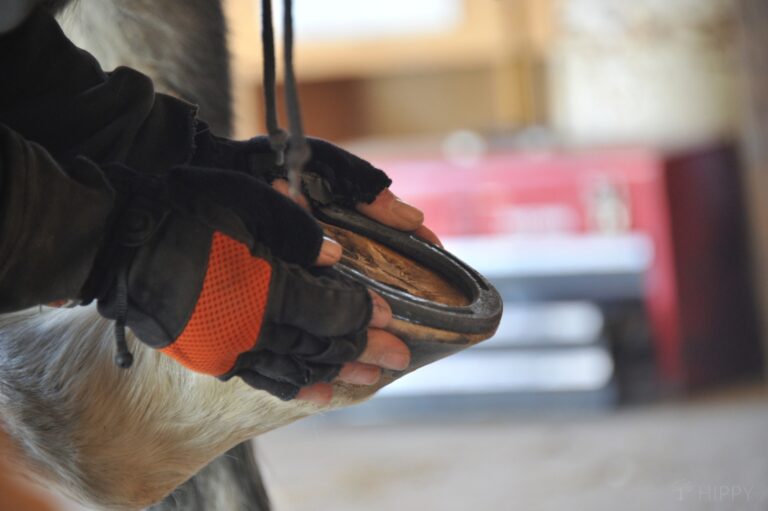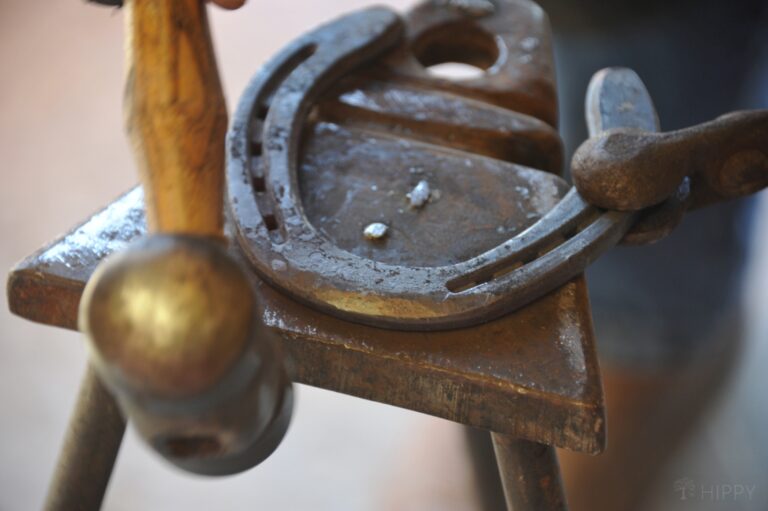Horses have been a part of human history for centuries, and their hooves have long been considered an important part of their health. In fact, the practice of shoeing horses dates back to ancient times. But do horse shoes actually do more harm than good?

No, there is no conclusive evidence that horse shoes are harmful to horses in general. Many vets believe that horse shoes can actually help protect the horse’s hooves from injury and wear and tear.
There is no denying that horse shoes fitted or set incorrectly can cause some problems for horses. They can make it difficult for horses to walk on soft ground or uneven terrain.
They can also damage the hoof or sole and cause the poor animal pain or discomfort. That being said, by and large shoeing a horse is just fine.
But there is much more to learn on the topic, and we will tell you all about it below.
What are Horse Shoes?
Horse shoes are plates of metal or other materials that are fitted to the bottom of a horse’s hooves. They usually have nails or studs that help keep them in place.
The purpose of horse shoes is to protect the hooves from wear and tear, and to provide traction on slippery or uneven surfaces.
Horse shoes come in different sizes, shapes, and materials, depending on the needs of the horse.
For example, racing horses often have special shoes that help them grip the track and run faster.
Some shoes even have special spikes on the bottom to help the horse get a better grip on icy or muddy ground.
How Long Have People been Shoeing Horses?
The practice of shoeing horses dates back to ancient times. The first recorded instance of horse shoeing was in Asia Minor around the year 1200 BC.
The practice then spread to the rest of Asia and on to Europe, where it became very popular among the Roman Empire and later on the knights and nobles of medieval times.
In fact, horse shoes were so important to medieval warfare that many armies had blacksmiths who traveled with them to make sure the horses’ hooves were always in good condition.
How Do You Shoe a Horse?
The process of shoeing a horse is fairly simple. First, the farrier (a person who shoes horses) will clean and trim the hooves and file them down so they are smooth.
Next, they will measure the hoof and choose a shoe that is the right size and shape or adjust a shoe until it is.
After that, they will nail the shoe to the hoof. The nails usually go through the hole in the shoe and into the side of the hoof, away from the tender flesh in the sole.
Finally, they will file down the nails and finish up by polishing the hooves.
Do All Horses Need to be Shoed?
No, not all horses need to be shod. In fact, many horses that are used for light work or that live on soft ground do not need shoes at all.
However, most racing horses and working horses do need to be shod. This is because their hooves take a lot of wear and tear and shoes help protect them.
Are Some Horseshoes Harmful to Horses?
Yes, some horseshoes can be harmful to horses if they are not fitted or set correctly. This is why it is important to have an experienced farrier do the work.
Shoes that are too small or too big, or set at the wrong angle can cause problems for horses.
Shoes that are not nailed in correctly can also come loose and injure the horse. Finally, shoes that are inappropriate to a surface might make it difficult for horses to walk on soft ground or uneven terrain.

What are Some Alternatives to Nailed-on Horseshoes?
There are several alternatives to nailed-on horseshoes. These include glue-on shoes, which are attached to the hoof with a special adhesive; and studs, which are small metal spikes that are screwed or glued into the bottom of the hoof.
How Can You Choose the Right Horseshoe for Your Horse?
The truth is there is no one definitive answer to this question. It really depends on the individual horse and its needs.
However, by and large, most horses that are used for riding or working purposes will benefit from having some kind of horseshoe.
If you are unsure of what kind of horseshoe to choose, it is best to consult with an experienced farrier.
They will be able to assess your horse’s needs and recommend the best type of shoe for your animal based on its unique needs and hooves.
What are the Risks of Not Using Horseshoes?
There are several risks associated with not using horseshoes, particularly for working horses.
These include an increased risk of injury to the hooves, as well as a decreased ability to grip on slippery or uneven surfaces.
In addition, horses that do not have horseshoes are more likely to slip and fall, which can lead to serious injuries.
For horses working on hard, man-made surfaces or even on rocky ground their hooves will wear down significantly faster than they can grow.
This can lead to painful cracks and chips in the hooves nearer the live tissues, which can make it difficult or even impossible for the horse to walk.
Even horses working on softer ground may end up with split hooves if they are not regularly maintained and have horseshoes to protect them.
Should I Shoe My Horses?
The bottom line is this: horseshoes can provide many benefits for most horses, and are almost always a good idea.
Yes, they can also cause harm if they are not used correctly, but consulting with an experienced professional that knows how to choose and fit shoes to your unique horse will make sure that you are doing what is best for your animal.
Tom has built and remodeled homes, generated his own electricity, grown his own food and more, all in quest of remaining as independent of society as possible. Now he shares his experiences and hard-earned lessons with readers around the country.
Find out more about the team here.
